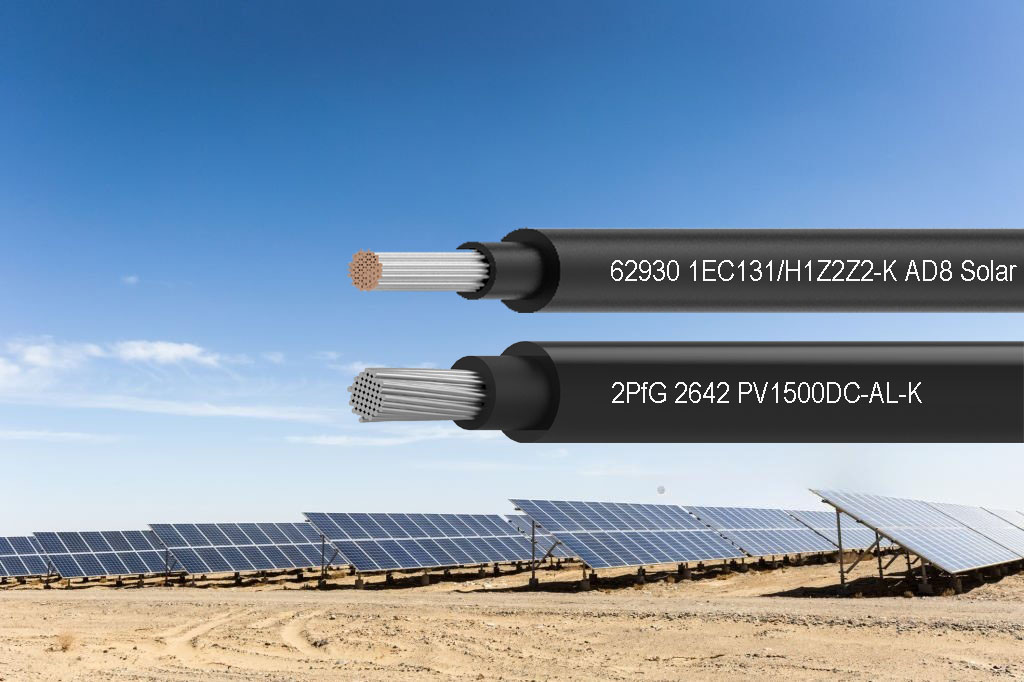The desert, with its year-round intense sunlight and vast open land, is considered one of the most ideal locations for investing in solar and energy storage projects. Annual solar radiation in many desert regions can exceed 2000W/m², making them a goldmine for renewable energy generation. However, these advantages come with significant environmental challenges — extreme temperature shifts, abrasive sandstorms, high UV exposure, and occasional humidity.
Desert photovoltaic cables are specially engineered to withstand these harsh conditions. Unlike standard PV cables, they feature upgraded insulation and sheath materials to ensure safe and stable performance in remote and rugged desert terrains.
I. Challenges for PV Cables in Desert Environments
1. High UV Radiation
Deserts receive continuous, direct sunlight with minimal cloud coverage or shading. Unlike temperate regions, UV radiation levels in deserts remain high year-round. Prolonged exposure can cause the cable sheath to discolor, become brittle, or crack, which leads to insulation failure and risks such as short circuits or even fire.
2. Extreme Temperature Fluctuations
A desert can experience temperature swings of 40°C or more within a single day — from scorching +50°C daytime peaks to freezing temperatures at night. These thermal shocks cause cable materials to repeatedly expand and contract, putting stress on the insulation and sheath. Conventional cables often fail under such cyclical stress.
3. Combined Heat, Humidity, and Abrasion
Desert cables face not only heat and dryness but also high winds, abrasive sand particles, and occasional rainfall or high humidity. Sand erosion can damage polymer materials, leading to cracking or puncturing. Additionally, fine sand can infiltrate connectors or terminal boxes, increasing electrical resistance and causing corrosion.
II. Specialized Design of Desert PV Cables
Desert PV cables use advanced XLPO (cross-linked polyolefin) for the sheath and XLPE (cross-linked polyethylene) for insulation. These materials are tested under international standards such as EN 50618 and IEC 62930, which include simulated sunlight aging. The result: prolonged cable life and reduced material degradation under relentless desert sun.
2. Wide Temperature Tolerance
To meet the demands of desert climate variability, these cables operate reliably in a wide temperature range:
-40°C to +90°C (continuous) and up to +120°C (short-term overload). This flexibility prevents thermal fatigue and ensures stable power transmission even with rapid temperature changes.
3. Reinforced Mechanical Strength
Conductors are precisely stranded copper or aluminum wires, combined with mechanically enhanced XLPO sheaths. The cables pass stringent tensile strength and elongation tests, enabling them to resist sand abrasion, wind strain, and installation stress over long distances.
4. Superior Waterproof and Dustproof Sealing
Although deserts are often dry, humidity spikes, sudden rainfalls, or condensation can threaten system integrity. Desert PV cables use high-grade waterproof XLPE insulation along with IP68-rated connectors, compliant with AD8 waterproofing standards. This ensures optimal protection in dusty or moist environments, reducing downtime and extending equipment lifespan — especially important in remote, hard-to-maintain sites.
III. Installation Considerations for Desert PV Cables
In large-scale solar farms, cables laid directly on desert soil face risks such as:
-
High surface temperature exposure
-
Sand abrasion
-
Humidity accumulation
-
Damage by rodents or maintenance equipment
To mitigate these, it is recommended to elevate cables off the ground using structured cable supports. However, strong desert winds can cause unsecured cables to sway, vibrate, or rub against sharp surfaces. Therefore, UV-resistant stainless-steel cable clamps are essential to securely fasten cables and prevent degradation.
Conclusion
Desert photovoltaic cables are more than just wires — they are the backbone of stable, high-efficiency energy transmission in some of Earth’s harshest climates. With reinforced UV protection, wide thermal endurance, superior waterproofing, and mechanical durability, these cables are purpose-built for long-term deployment in desert solar applications.
If you’re planning a solar installation in desert regions, choosing the right cable is critical to your system’s safety, performance, and longevity.
Post time: Jul-11-2025

